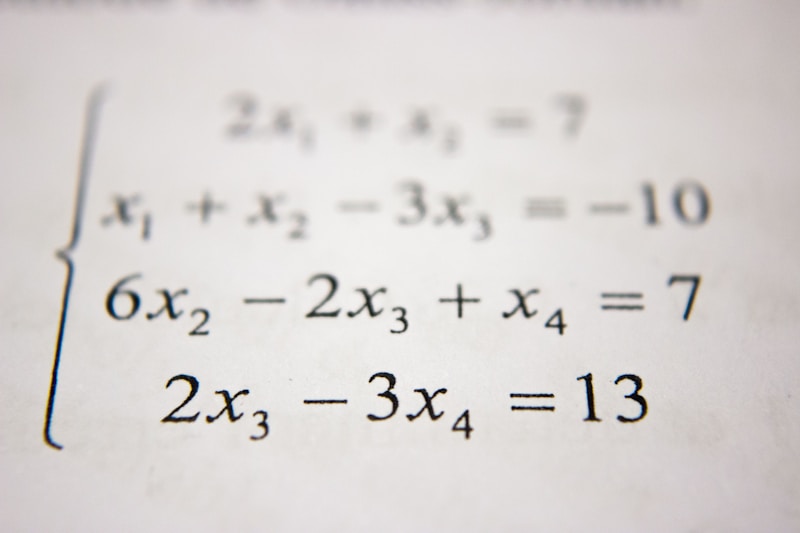Podcast
Questions and Answers
ما هو الهدف الرئيسي من إعداد ميزانية؟
ما هو الهدف الرئيسي من إعداد ميزانية؟
كيف يتم حساب الفائدة البسيطة؟
كيف يتم حساب الفائدة البسيطة؟
ما هي النتيجة عندما يتم حساب الخصم على منتج بسعر 200$ بقيمة خصم 20%؟
ما هي النتيجة عندما يتم حساب الخصم على منتج بسعر 200$ بقيمة خصم 20%؟
ما هي الطريقة الصحيحة لتحويل نسبة مئوية إلى عدد عشري؟
ما هي الطريقة الصحيحة لتحويل نسبة مئوية إلى عدد عشري؟
Signup and view all the answers
ما الذي يميز الفائدة المركبة عن الفائدة البسيطة؟
ما الذي يميز الفائدة المركبة عن الفائدة البسيطة؟
Signup and view all the answers
ما هي العناصر الأساسية التي يجب توثيقها في المعاملات المالية؟
ما هي العناصر الأساسية التي يجب توثيقها في المعاملات المالية؟
Signup and view all the answers
كيف تؤثر أسعار الصرف على عمليات المعاملات الدولية؟
كيف تؤثر أسعار الصرف على عمليات المعاملات الدولية؟
Signup and view all the answers
ما هو الدور الأساسي للبيانات المالية؟
ما هو الدور الأساسي للبيانات المالية؟
Signup and view all the answers
ما هي أهمية فهم الرياضيات المالية في اتخاذ قرارات المستهلك؟
ما هي أهمية فهم الرياضيات المالية في اتخاذ قرارات المستهلك؟
Signup and view all the answers
ما مفهوم الفائدة المركبة في الاستثمارات؟
ما مفهوم الفائدة المركبة في الاستثمارات؟
Signup and view all the answers
Study Notes
Basic Arithmetic Operations
- Addition: Combining two or more numbers to find a total. Used to calculate sums of money.
- Subtraction: Finding the difference between two numbers. Used to calculate change or remaining balance.
- Multiplication: Repeated addition of a number; used for finding the total of multiple equivalent amounts (e.g., price of multiple items).
- Division: Separating a number into equal parts; used for calculating average costs, dividing amounts evenly (e.g., splitting a bill).
Budgeting
- Budgeting involves tracking income and expenses to manage finances effectively.
- Creating a budget involves estimating income and allocating funds to various expense categories.
- Common categories include housing, food, transportation, entertainment, and savings.
- Budgeting helps individuals and businesses in achieving financial goals and avoiding debt.
- Tools can assist in creating and maintaining budgets, including spreadsheets, budgeting apps, and financial software.
Calculating Interest
- Simple interest is calculated on the principal amount only. Formula: Interest = Principal × Rate × Time.
- Compound interest is calculated on the principal and accumulated interest. This results in faster growth.
- Compounding periods affect how frequently interest is calculated and added. More frequent compounding generally leads to more significant returns over time.
- Interest rates vary depending on the financial instrument and lender/borrower terms. High-risk investments often have higher interest rates.
Calculating Discounts and Markups
- Discounts reduce the original price of a product or service, commonly expressed as a percentage.
- A markup increases the original cost of a product or service.
- Calculating discounts involves finding a percentage of the original price and subtracting it.
- Calculating markups involves finding a percentage of the original price and adding it.
- These calculations are crucial for businesses in pricing strategy and sales promotions.
Percentage Calculations
- Percentage represents a proportion or fraction of 100. Useful for expressing proportions of a whole, discounts, taxes, and growth rates.
- To calculate a percentage of a number, multiply the number by the percentage (converted to a decimal).
- Converting a percentage into a decimal involves dividing the percentage by 100.
- Percentages help interpret data and compare different quantities effectively.
Financial Transactions
- Transactions are records of financial exchanges.
- Common types include deposits, withdrawals, payments, and transfers.
- Recording transactions accurately is fundamental for maintaining financial records.
- Transactions often involve specific dates, amounts, and descriptions that should be documented.
Currency Exchange
- Currency exchange converts money from one currency to another; often for international transactions.
- Exchange rates fluctuate based on supply and demand factors.
- The exchange rate affects the value of the transacted amounts.
- Knowing the current exchange rate is essential for international transactions.
Financial Statements
- Financial statements provide a snapshot of a company or individual's financial position.
- Common statements include balance sheets, income statements, and cash flow statements.
- Balance sheets show assets, liabilities, and equity at a specific point in time.
- Income statements report revenues and expenses over a period.
- Cash flow statements track cash inflows and outflows.
Consumer Decisions
- Understanding money math is beneficial in making sound consumer decisions. This includes budgeting, calculating costs, examining returns for products, and considering investments options.
- Comparing prices from different retailers is one use case.
- Analyzing value for the price of an item is critical for efficient resource utilization.
- Evaluating loan and credit card options involves calculations to minimize debt and maximizing benefits.
- Consumer choices about spending are affected by interest rates, fees, and terms of contracts or offers.
Investments
- Understanding compound interest is critical for long-term investments.
- Investing involves allocating capital to potentially increase money over time.
- Investments carry risk, but may provide higher potential returns.
- Different investment options have varied risk/reward profiles.
- Investors use various strategies for long-term financial goals and wealth building.
Studying That Suits You
Use AI to generate personalized quizzes and flashcards to suit your learning preferences.
Description
هذا الاختبار يغطي أساسيات العمليات الحسابية مثل الجمع والطرح والضرب والقسمة، بالإضافة إلى مفهوم إعداد الميزانية. سيساعدك على فهم كيفية إدارة الأموال بشكل فعال وتحقيق الأهداف المالية. تحضير نفسك لاختبار معرفتك في هذه المواضيع المهمة.




